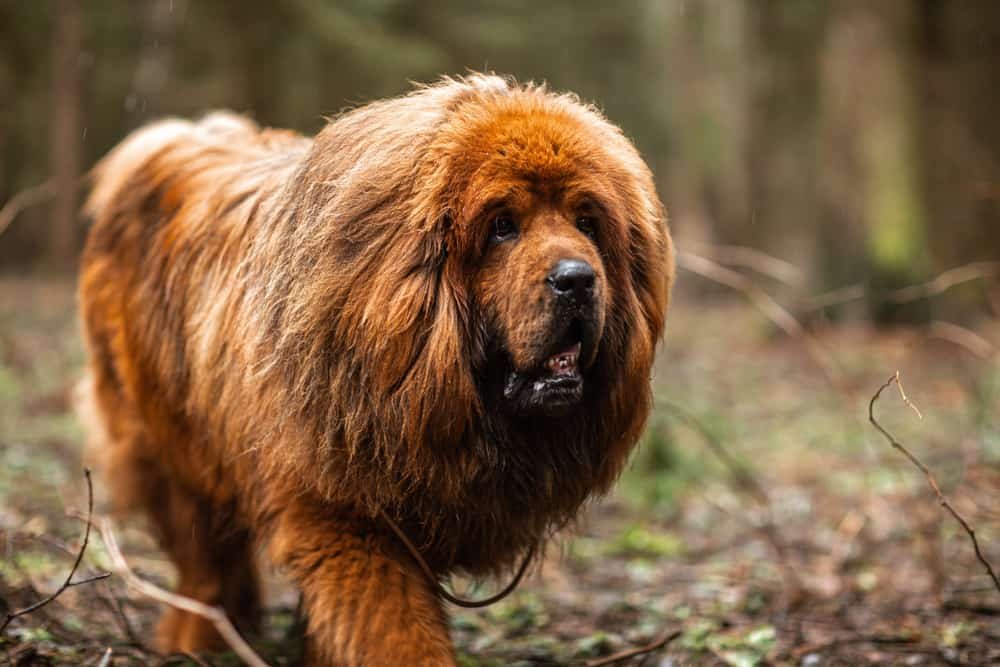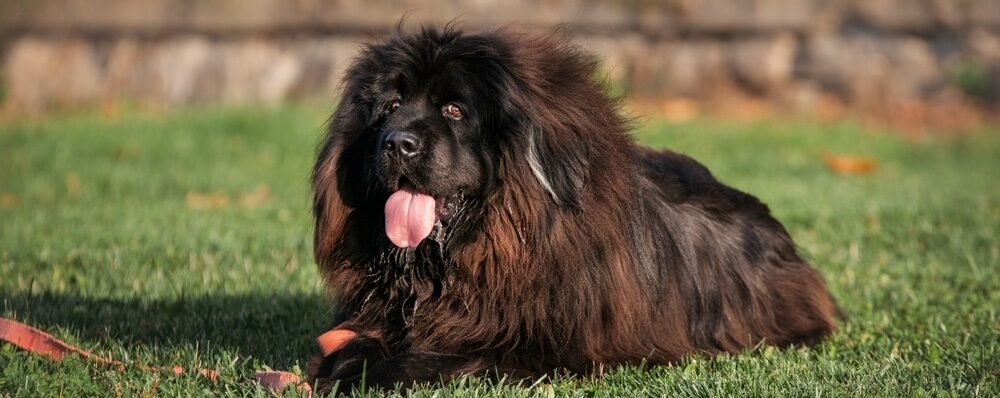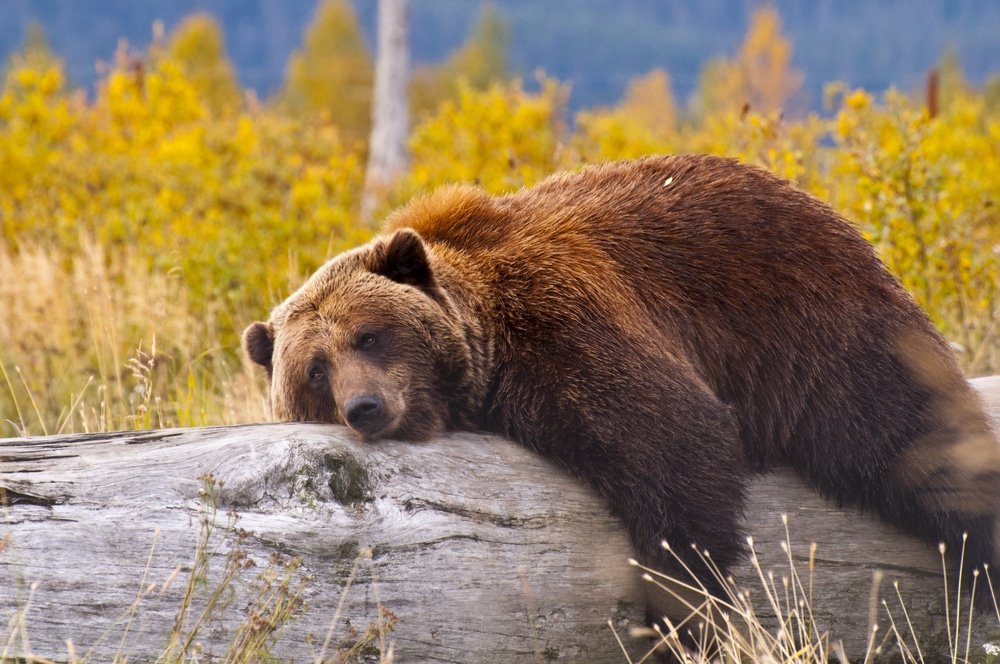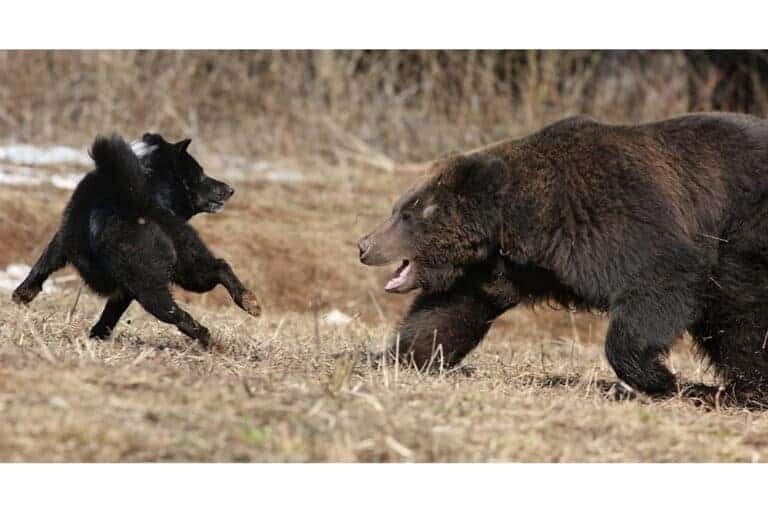The Tibetan Mastiff bear hunting dog is a majestic and ancient breed known for its imposing size, impressive strength, and loyal nature. Originating in the Himalayan region of Tibet, these magnificent canines have been revered for centuries as guardians of monasteries and nomadic camps. Beyond their protective role, Tibetan Mastiffs possess unique hunting abilities that set them apart from other breeds.

Hunting Abilities of Tibetan Mastiffs
Beyond their reputation as guardians, Tibetan Mastiffs possess exceptional hunting abilities that make them extraordinary creatures. These dogs have an innate instinct for tracking, chasing, and capturing prey—an ability passed down through generations. Their remarkable sense of smell allows them to detect bears from significant distances away.
In addition to their keen sense of smell, Tibetan Mastiffs exhibit surprising agility despite their massive size. They have an uncanny ability to navigate rugged terrains nimbly and effortlessly – qualities crucial when engaging in bear-hunting expeditions.
Ancient Origins in Tibet and the Himalayan Region
Beneath the majestic peaks of the Himalayas, amidst the rugged terrains of Tibet, lies the ancient homeland of the Tibetan Mastiff. This noble breed traces its roots back thousands of years to these remote and inhospitable regions, where it evolved to survive in extreme weather conditions and serve as a versatile companion to humans.
Revered for their immense loyalty and unwavering dedication, Tibetan Mastiffs were initially bred by nomadic tribes as protectors of their encampments and herds. Their origins can be traced back to the nomads of central Asia who roamed the vast plateaus of Tibet.
These early breeders carefully selected dogs with exceptional endurance, strength, agility, and protective instincts necessary for survival in their harsh environment. Over centuries of selective breeding and adaptation to high altitudes, this magnificent breed emerged with its distinctive characteristics.
Revered as Guardians of Monasteries and Nomadic Camps
Beyond serving as steadfast companions to nomadic herders, Tibetan Mastiffs earned a profound reputation as guardians entrusted with protecting monasteries nestled within the mountains. The spiritual leaders revered these noble creatures for their unwavering loyalty and fiercely protective nature.
The mastiffs’ presence ensured physical security and safeguarded treasured artifacts held sacred within monastic walls. These formidable dogs also played an integral role in maintaining order within nomadic camps.
Their imposing size deterred potential threats from both man and beast alike. With an acute sense of territoriality ingrained in their nature, they fearlessly stood guard over encampments through long nights under star-studded skies.
Historical Records of Their Involvement in Bear Hunting
While renowned for their guarding prowess, Tibetan Mastiffs also showcased exceptional hunting abilities throughout history. Historical records reveal their active involvement in bear hunting, requiring immense courage, strength, and strategic thinking.
These dogs forged an inseparable bond with their human counterparts as they embarked on daring expeditions deep into the untamed wilderness. Armed with their innate senses and formidable physical attributes, Tibetan Mastiffs were instrumental in tracking down prey.
Working alongside hunters, these canines employed their sharp instincts to sniff out traces of bears from vast distances. Their relentless pursuit of bears demonstrated their determination, agility, and stamina to navigate treacherous mountain terrains.
Whether standing sentinel at monasteries or venturing into the wilderness for bear hunts, Tibetan Mastiffs’ history is intertwined with tales of loyalty, bravery, and service to humanity. These extraordinary dogs have left an indelible mark on folklore and historical records, cementing their place as remarkable beings deserving of admiration and respect.
Brief Overview of the Tibetan Mastiff Breed

The Tibetan Mastiff is a large and powerful dog breed with a muscular frame that gives them incredible strength. Males can reach heights of up to 33 inches at the shoulder and weigh anywhere between 90 to 150 pounds or more. Their overall appearance exudes power and ruggedness.
One of their most distinguishing features is their thick double coat, which protects them from the harsh weather conditions in their native Himalayan region. This luxurious coat makes them look regal and provides insulation from extremely cold temperatures.
Physical Characteristics
Large and powerful build, with a muscular frame
The Tibetan Mastiff is an impressively large and robust breed known for its formidable stature. Males can reach heights of up to 26 inches at the shoulder and weigh between 90 to 150 pounds, while females are slightly smaller but still substantial.
Their bodies are well-proportioned and built for strength, with a solid bone structure and well-developed muscles that exude power. This remarkable build gives them the advantage of taking on challenging tasks such as bear hunting.
Thick double coat for protection against extreme weather conditions
In the harsh climate of the Tibetan Plateau and the Himalayan region, where temperatures can plummet to frigid levels, the Tibetan Mastiff’s thick double coat is an essential safeguard against the elements.
The outer coat is long, coarse, and weather-resistant, providing excellent insulation against cold temperatures. It is a protective barrier that keeps them warm during winter expeditions into high altitudes.
Beneath this outer layer lies a dense undercoat that provides further insulation by trapping air close to the body, effectively preserving their body heat. This unique combination of fur keeps them warm in freezing temperatures and protects their skin from harsh winds and icy precipitation during their hunting endeavors.
Prominent mane around the neck and feathering on tail and legs
A distinctive characteristic of Tibetan Mastiffs is their regal appearance enhanced by a majestic mane around their necks. This prominent ruff frames their face like a lion’s mane, adding to their majestic aura.
The purpose of this feature extends beyond aesthetics; it serves as additional protection for vulnerable areas, such as the throat, from potential attacks during intense confrontations with bears. Furthermore, these remarkable dogs exhibit feathering on their tail and legs.
Delicate tufts of longer hair adorn their tail, creating an elegant plume that adds to their visual appeal. The feathering on the legs contributes to their striking appearance band provides additional protection for the lower extremities during treks through rugged terrains and underbrush, guarding against potential injuries.
The physical characteristics of Tibetan Mastiffs play a crucial role in their bear-hunting capabilities. Their large and powerful build allows them to confront bears with confidence.
The thick double coat shields against extreme weather conditions, providing insulation and protection. Additionally, their distinct mane around the neck and feathering on the tail and legs contribute to their majestic appearance and practical defense mechanisms during hunts.
The Hunting Instincts and Skills of Tibetan Mastiffs

Natural Instincts for Tracking, Chasing, and Capturing Prey
Tibetan Mastiffs possess an innate hunting prowess that has been honed over centuries. Their ancestors were relied upon by Tibetan nomads and monks to protect their camps from predators and help procure food. This heritage has ingrained a strong prey drive, making them highly efficient trackers and hunters.
When it comes to bear hunting, these instincts kick into high gear. Tibetan Mastiffs display remarkable tenacity when faced with the task of tracking down a bear,
They can diligently follow the scent trail left behind by a bear for miles on end without losing focus or getting distracted. With unwavering determination, they carry out their role as tracking dogs with exceptional precision.
Exceptional Sense of Smell for Detecting Bears from Long Distances
One of the key reasons why Tibetan Mastiffs excel at bear hunting is their extraordinary sense of smell. Their olfactory capabilities are finely tuned to detect minute traces of scent left behind by bears over vast distances. This acute sense allows them to pick up on even the faintest whiff of a bear’s presence.
The olfactory receptors in their noses are much more abundant than those in many other dog breeds. This gives them an edge when detecting bears in sprawling landscapes or rugged terrains where visual cues may be limited.
This heightened sense of smell enables them to track bears from long distances away, alerting their human companions well before they come into proximity with these powerful creatures.
Remarkable Agility Despite Their Size, Enabling Them to Navigate Rugged Terrains
Despite being large and robust animals, Tibetan Mastiffs possess surprising agility that defies their size. They have an uncanny ability to maneuver through treacherous and uneven terrains commonly found in the bear’s natural habitat.
This agility allows them to keep up with bears, even with steep slopes, rocky landscapes, or dense vegetation. Their strong muscular build and well-balanced physique provide them with the necessary power and stability to negotiate challenging environments.
Their large padded paws offer excellent traction on various surfaces, ensuring they can easily tackle rugged terrains. This agility is crucial during bear hunts, as it allows Tibetan Mastiffs to maintain chase and stay on the trail of their quarry until they reach their goal.
Tibetan Mastiffs possess unique hunting instincts and skills, making them exceptional bear-hunting dogs. Their natural abilities for tracking, chasing, and capturing prey are unparalleled.
Their exceptional sense of smell enables them to detect bears from vast distances, while their remarkable agility empowers them to navigate challenging terrains effortlessly.
This remarkable combination of traits sets the Tibetan Mastiff apart as a formidable companion for bear hunters throughout history.
Training for Bear Hunting

Early socialization to develop trust, obedience, and focus
Tibetan Mastiffs destined for bear hunting undergo a rigorous training regime that begins with early socialization. This crucial period allows them to develop trust in their handlers and become accustomed to different environments, people, and animals.
Puppies are exposed to various stimuli, such as different sounds, smells, and textures, to help them acclimate to the unpredictability of the hunting terrain they will encounter later in life. During this phase, they also learn basic obedience commands like “sit,” “stay,” and “come,” which form the foundation of their training.
Handlers work tirelessly to establish a strong bond with their Tibetan Mastiffs during this early stage. Positive reinforcement techniques are employed extensively, using treats or praise whenever the dog responds correctly to commands.
By consistently reinforcing good behavior, handlers instill a sense of discipline and respect in the dogs while ensuring they remain eager learners. Through early socialization, Tibetan Mastiffs develop the confidence needed for bear hunting tasks as they learn to obey commands promptly, even amidst highly stimulating situations.
Training techniques specific to bear hunting tasks
To specifically prepare Tibetan Mastiffs for bear hunting, specialized training techniques focus on teaching them key skills for tracking, capturing, and holding bears until human hunters arrive at the scene.
One critical aspect involves teaching specific commands related to bear hunting activities. Commands like “track,” “hold,” or “release” are regularly practiced using positive reinforcement methods so that dogs understand what is expected from them during a hunt.
Another vital aspect of training involves familiarizing Tibetan Mastiffs with bear scent through scent training exercises. Handlers use various tools such as scented objects or clothing infused with traces of bear scent during playtime or hide-and-seek games with the dogs.
This allows canines to associate the smell of bears with positive experiences, reinforcing their instinctual drive to search for and locate bears in different environments.
Scent training exercises progressively increase in difficulty, simulating real-life hunting scenarios where the dogs must follow bear trails and accurately detect their presence by scent alone.
The combination of early socialization and specialized training techniques equips Tibetan Mastiffs with the necessary skills and knowledge to become adept bear-hunting dogs. Their ability to respond to commands swiftly and precisely track a bear’s scent is fundamental in successful hunts.
Bear Hunting Techniques Employed by Tibetan Mastiffs

Stalking: Utilizing their natural stealthiness to approach bears
Tibetan Mastiffs are masters of stealth when it comes to bear hunting. Their instincts allow them to move silently through the terrain, making them particularly adept at stalking their prey.
These majestic dogs can approach bears undetected with caution, patience, and an acute sense of awareness. Their large and powerful bodies are surprisingly agile, enabling them to navigate through the dense undergrowth or rocky landscapes that bears often inhabit.
During the stalking phase, Tibetan Mastiffs rely on their exceptional camouflage abilities. The thick double coat, with its blend of colors, easily blends into the surrounding environment, making it difficult for bears to spot them from a distance.
They move slowly and deliberately, keeping low to the ground and using any available cover to conceal their presence. This careful approach ensures they get as close as possible without alarming or alerting the bear.
Baying: Vocalizing loudly to distract or immobilize bears during hunts
Once a Tibetan Mastiff has successfully approached a bear without being detected, it employs an impressive vocalization technique called “baying.” Baying is a loud and distinctive vocalization that serves multiple purposes during bear hunting. The deep and powerful barks are intended to distract or immobilize the bear by surprising or confusing it.
The loud barking not only disorients the bear but also alerts human hunters or handlers of its location. In collaborative hunts involving human participation, the Tibetan Mastiff’s baying helps direct human hunters toward the bear’s position, ensuring effective teamwork in tracking down and capturing the prey.
It is important to note that while baying is an essential technique used by Tibetan Mastiffs during hunts, they do not physically confront the bears. Instead, their vocalization acts as a deterrent and aids in controlling the bear’s movements, allowing human hunters to approach and deal with the situation safely.
Collaborating with handlers or hunters in tracking down bears
Tibetan Mastiffs are highly intelligent dogs that excel in collaboration with human hunters or handlers during bear hunts. These hunts often involve a team effort where the Tibetan Mastiff, with its keen sense of smell and tracking abilities, assists in locating bears in challenging terrains.
Working closely with handlers or experienced hunters, Tibetan Mastiffs follow scent trails from bears through vegetation or rocky terrain. Their powerful nose can detect faint traces of bear scent, leading them toward the target location.
They display remarkable focus and obedience during these hunts, following instructions from their human counterparts. Once a bear is located, Tibetan Mastiffs maintain a safe distance while actively communicating its presence through baying.
This collaboration ensures that canines and humans work harmoniously together to successfully track down and capture bears. The combination of their extraordinary skills and teamwork underscores the unique hunting prowess of Tibetan Mastiffs when it comes to bear hunting endeavors.
Tibetan Mastiffs as Bear Deterrents

Their Presence Helps Deter Bears from Attacking Herds or Flocks
When it comes to protecting valuable livestock, Tibetan Mastiffs have proven themselves to be invaluable assets. Their imposing size, powerful build, and innate protective instincts make them natural guardians of herds or flocks.
A Tibetan Mastiff’s mere presence can be a strong deterrent against bear attacks. These majestic dogs establish a firm territorial boundary around the livestock, keeping potential threats at bay.
Tibetan Mastiffs are inherently loyal to their charges, forming deep bonds with the animals they protect. They are exceptionally vigilant and possess acute senses, allowing them to detect the presence of bears even before approaching the livestock.
When confronted by a bear, these fearless guardians do not hesitate to confront and intimidate the intruder with their deep booming barks and fierce posture. This display of dominance often persuades bears to retreat rather than avoid conflicting with such formidable opponents.
Livestock owners who rely on Tibetan Mastiffs for protection find peace of mind knowing their animals are safeguarded day and night. The breed’s unwavering loyalty and intimidating physical appearance make them invaluable in reducing bear-related losses within herds or flocks.
Conclusion – Tibetan Mastiff Bear Hunting Dog
The Tibetan Mastiff’s remarkable abilities as a bear-hunting dog are undeniably impressive. From their ancient origins in Tibet to their role as guardians of monasteries and nomadic camps, this breed has evolved over centuries into an exceptional hunting companion.
Equipped with innate instincts for tracking, chasing, and capturing prey and unmatched agility despite their size – they are uniquely suited for bear hunting tasks.
Furthermore, beyond their hunting prowess lies the Tibetan Mastiff’s remarkable dedication to protecting livestock. Their loyalty, courage, and imposing presence help deter bears from attacking herds or flocks, making them indispensable in preserving the livelihoods of livestock owners.
With their unmatched skill set and unwavering loyalty, the Tibetan Mastiff leaves an indelible mark on history and remains a symbol of strength and resilience. When considering the remarkable capabilities of the Tibetan Mastiffs as bear-hunting dogs and guardians of livestock, one can’t help but feel a sense of admiration for their unique talents.
These magnificent creatures serve as a reminder that with proper training, companionship, and guidance, nature’s gifts can be harnessed for the betterment of both humans and animals alike. Let us embrace their incredible contributions to our world and cherish these remarkable animals for generations.


Can you be more specific about the content of your article? After reading it, I still have some doubts. Hope you can help me.
It’s hard to find educated people about this subject, but you
sound like you know what you’re talking about!
Thanks
Real good info can be found on web site.Raise your business
Can you be more specific about the content of your article? After reading it, I still have some doubts. Hope you can help me.